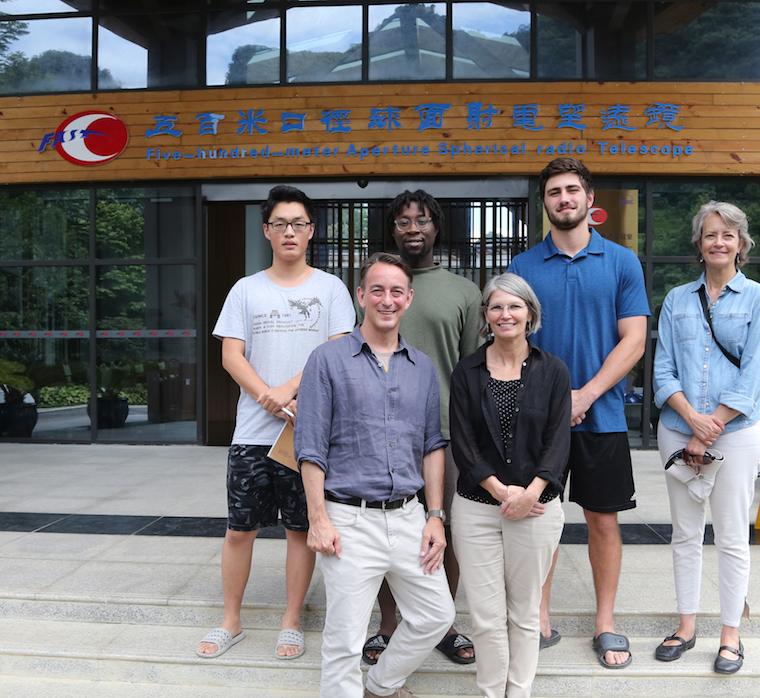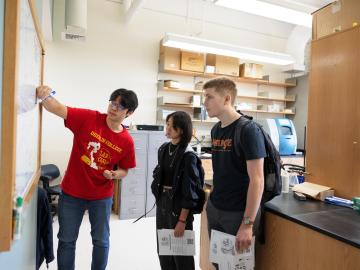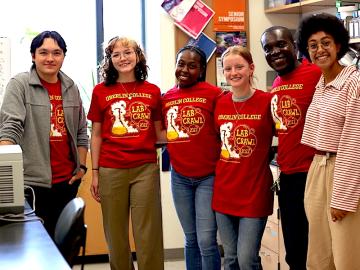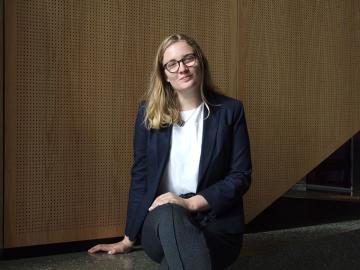Summer Research at FAST
October 4, 2018
Erin Ulrich ’18

Physics majors Didier Banyeretse ’20 and Hengrui Zhu ’21 spent the summer working at the largest radio telescope in the world—the FAST telescope in China.
Located in the economically depressed Guizhou province in China, FAST has attracted onlookers from around the world. The 500-meter Aperture Spherical Radio Telescope (FAST) cost the Chinese government more than $180 million to construct and has brought in not only tourists, but some of the world’s most adept radio astronomers. Didier Banyeretse ’20 and Hengrui Zhu ’21, both physics majors at Oberlin, had the opportunity to conduct research at the FAST site, which included working alongside Chinese astronomer Weiwei Zhu to implement data from the FAST telescope at Oberlin.
Both Banyeretse and Zhu were research assistants for Francis D. Federighi Professor of Physics Dan Stinebring in 2017, who has been instrumental in connecting Obies with research opportunities at the FAST site.
These international research opportunities for students are funded by the North American Nanohertz Observatory for Gravitational Waves (NANOGrav), of which Stinebring is a senior researcher, with support from the National Science Foundation.
Stinebring has been a faculty member at Oberlin for more than 25 years and has long been a proponent of the lasting effects of international research opportunities on students.
He says, “Like other Oberlin faculty members in the sciences, my own research is greatly enriched by the collaborative work that students and I do together. These experiences can help shape a life, whether or not the student decides to pursue a career in astronomy.”
Stinebring, who frequently involves students in his research, also facilitated a research fellowship for Shana Li ’20 with the FAST research group in the summer of 2017.
Although nearby Pingtang has been dubbed “Pingtang Astronomy Town” because of the considerable number of tourists who have flooded the region, Banyeretse says that he was able to work with relative quiet and peace of mind throughout the summer because of the numerous checkpoints leading to the FAST site.
Banyeretse’s research at FAST was not only a prestigious opportunity, but an extension of his previous research opportunities guided by Stinebring. Banyeretse says, “My plans to participate in this research began in January of this year when Professor Stinebring and I traveled to the Arecibo Observatory in Puerto Rico. From there, I got acquainted with some wonderful people at NANOGrav who facilitated this amazing research opportunity.”
For Stinebring, seeing his students thrive while pushing themselves out of their comfort zones is invaluable. “It is very exciting to see these young researchers gaining experience, confidence, and a set of international contacts,” he says.
“The research we are pursuing may result in the detection of long-wavelength gravitational waves from orbiting supermassive black holes. These students will be on the forefront of that effort as we expand our collaboration to include Chinese researchers and facilities.”
Tags:
You may also like…
Friday Afternoon with Lab Crawl
October 30, 2023
This year’s Lab Crawl drew what may be the largest crowd in the event’s illustrious history, with some 500 students and dozens of faculty taking part. Missed out on the excitement? It looked something like this.
Lab Crawl: It’s Not Just for Scientists
October 24, 2023
Oct. 27 open house highlights research across the sciences—and just about everywhere else.
In the Path of Disaster
August 28, 2023
Monica Dix travels to a hub of natural calamity to probe its risks and resilience.


